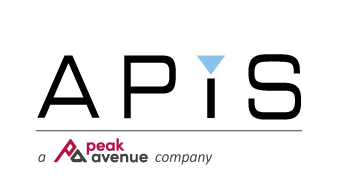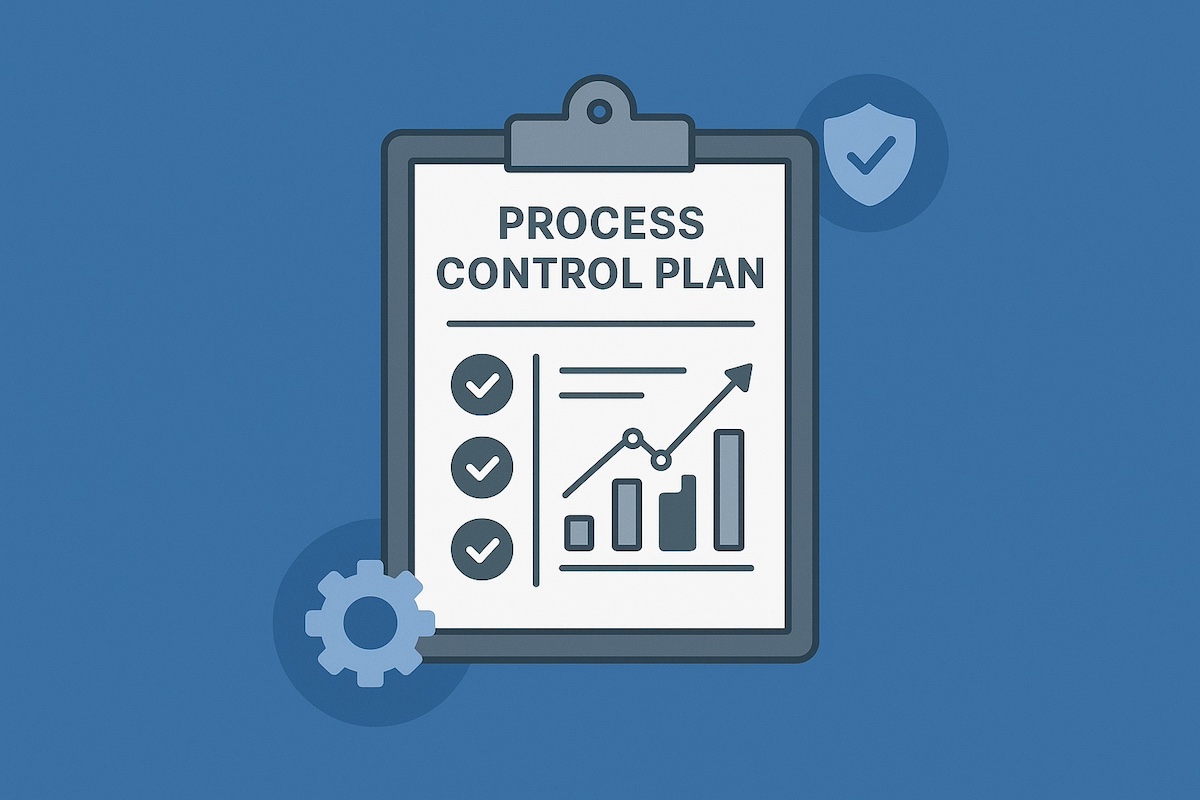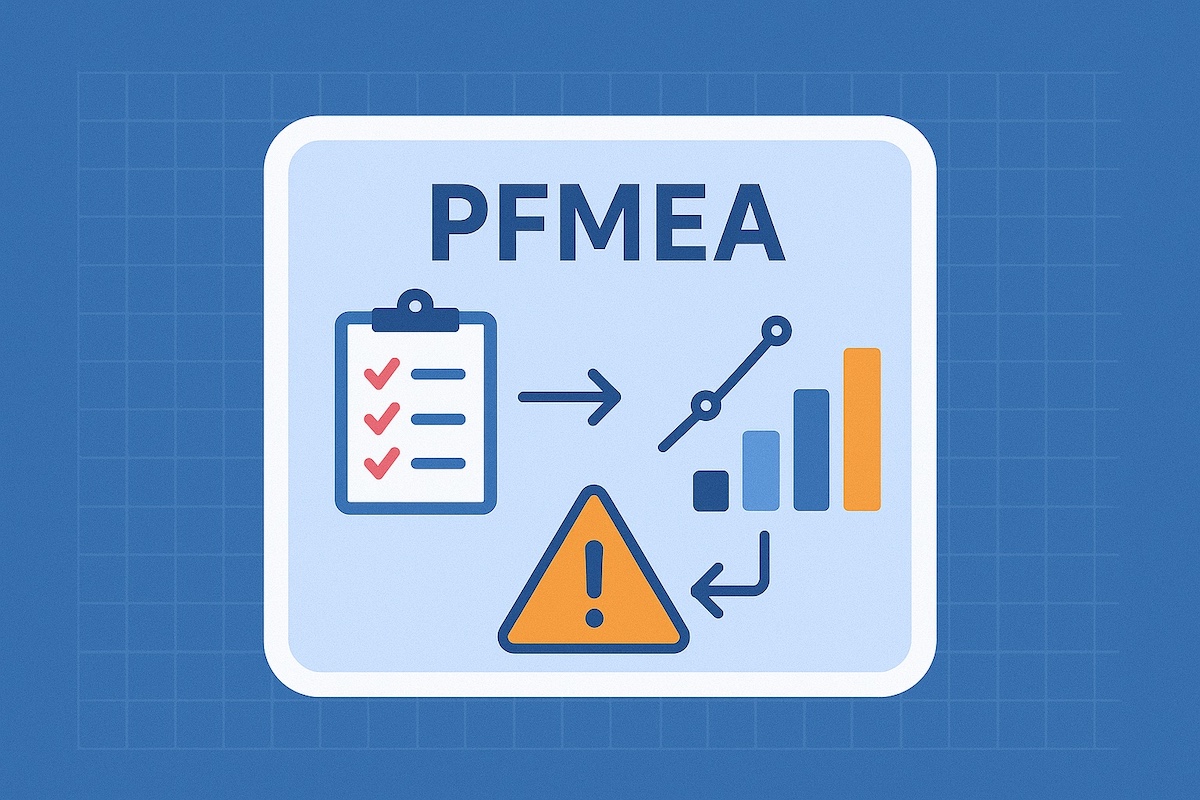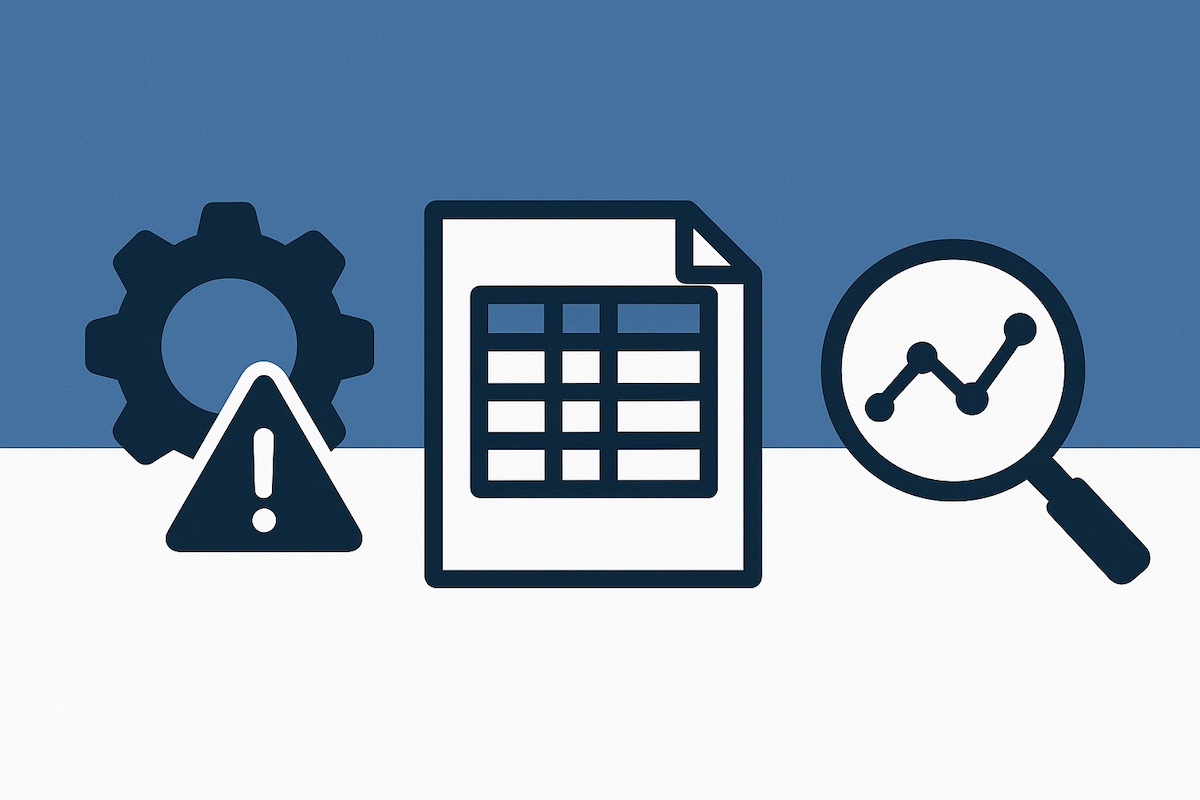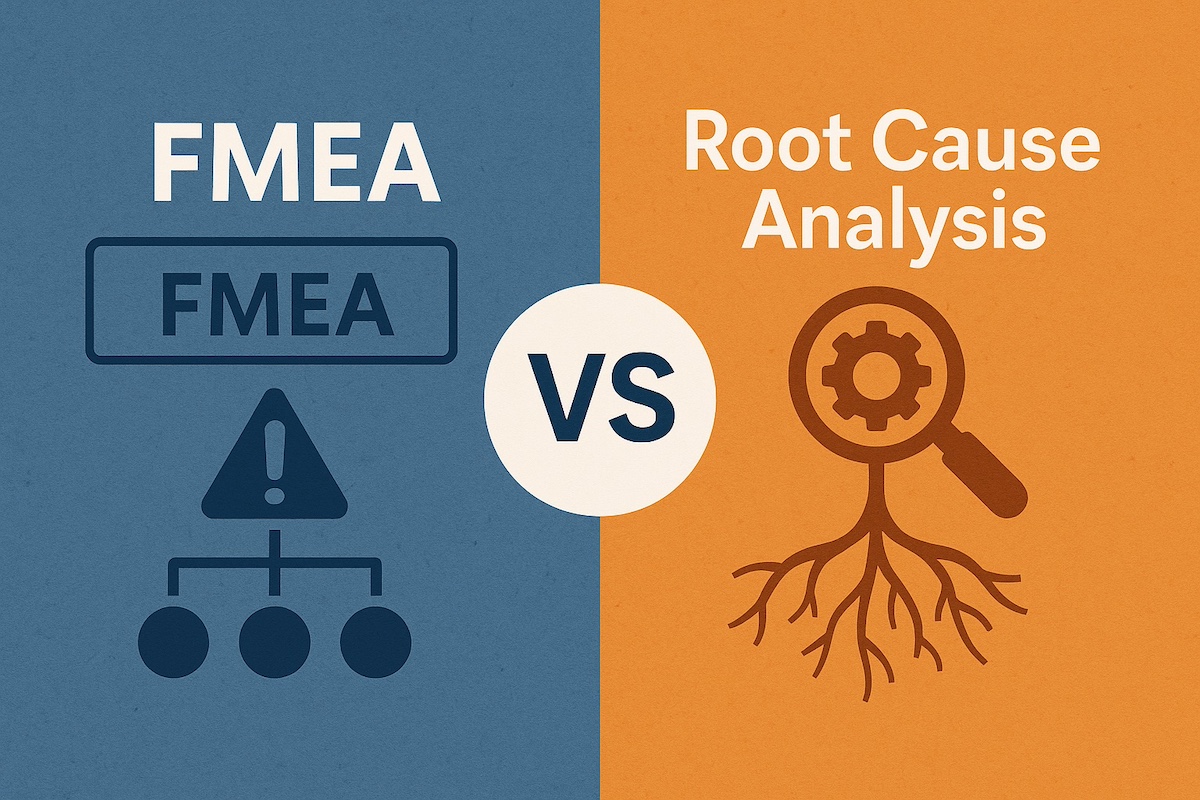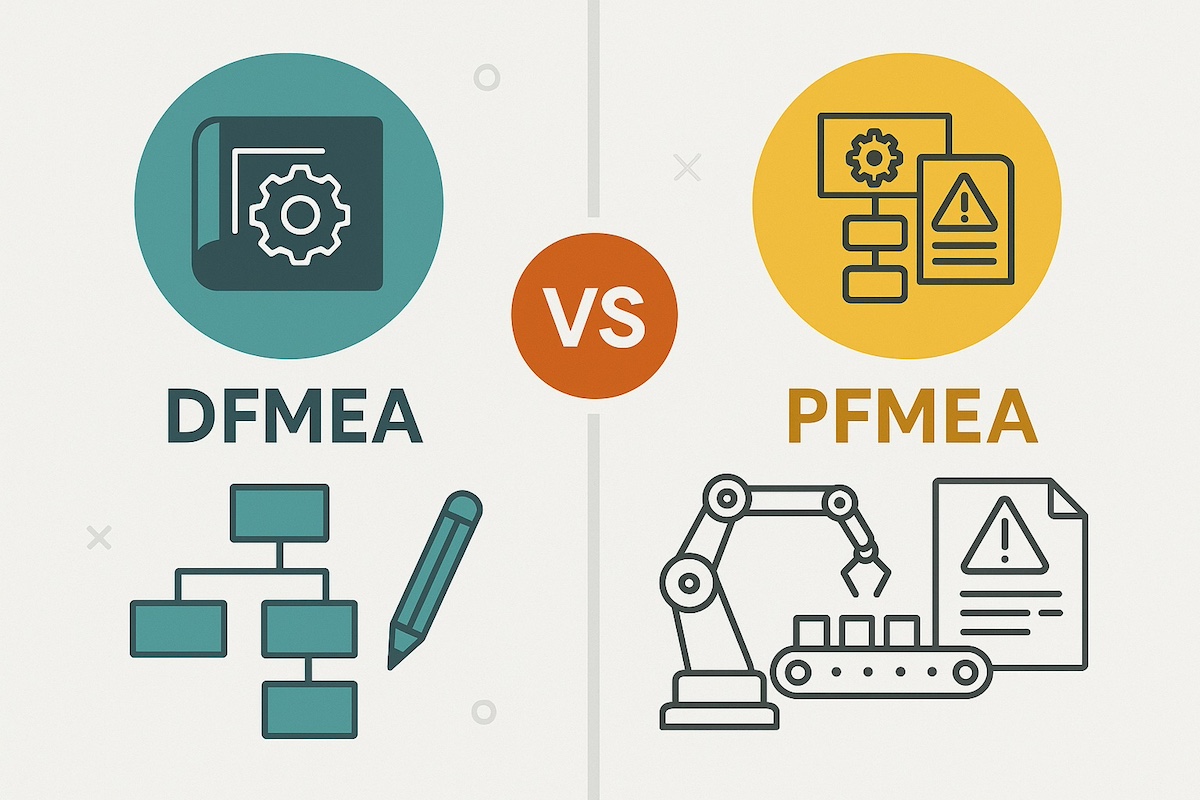In today’s manufacturing and engineering environments, consistent product quality is not just desirable—it’s essential. Companies across the automotive, aerospace, medical, and electronics industries face increasing pressure to minimize defects, reduce downtime, and meet strict regulatory requirements. Two of the most effective tools used to achieve these goals are the Process Control Plan (PCP) and Failure Modes and Effects Analysis (FMEA).
Together, these tools help organizations build more robust processes, prevent failures before they happen, and deliver high-quality products efficiently. In this guide, we’ll break down what a Process Control Plan is, how it works, and how integrating it with FMEA strengthens your quality management system.
What Is a Process Control Plan?
A Process Control Plan is a structured document that outlines how key aspects of a manufacturing process will be monitored and controlled to ensure that products meet quality standards. It serves as a communication tool between engineering, manufacturing, and quality teams, helping ensure consistency and repeatability in production.
Control plans are commonly used in Advanced Product Quality Planning (APQP) and are considered a core quality tool in the Automotive Industry Action Group (AIAG) guidelines.
Main Elements of a Process Control Plan
A typical control plan includes the following sections:
- Process Step – A description of each operation in the process flow
- Product or Process Characteristic – The specific attribute being controlled (e.g., hole diameter, weld strength)
- Specification/Tolerance – Acceptable range for that characteristic
- Inspection Method – The tool or technique used to monitor (e.g., caliper, visual inspection)
- Inspection Sample Size & Frequency – How often inspections or checks should occur
- Error Proofing – What you do to ensure that the inspection device is giving correct results (e.g., red-rabbit, or visual aids for visual inspections to ensure the defect is clearly understood)
- Control Method – What you are doing with your inspection data to control the characteristic (e.g., SPC control chart)
- Reaction Plan – Steps to take when results are out of spec or a failure is detected
This structure ensures that all team members understand what needs to be controlled, how it should be done, and what to do if something goes wrong.
Why Is a Process Control Plan Important?
Control plans are not just paperwork—they’re essential tools for quality assurance and process stability. Without them, variation can creep into processes, leading to product defects, safety concerns, and customer dissatisfaction.
Key Benefits
- Reduces Variation – Standardizing controls minimizes inconsistencies across shifts and operators
- Improves Compliance – Helps meet regulatory and customer-specific requirements
- Prevents Defects – Proactively identifies and addresses quality risks
- Facilitates Communication – Aligns engineering, operations, and quality teams
- Supports Audits – Demonstrates due diligence and traceability for quality standards like IATF 16949 or ISO 9001
Industries That Rely on Control Plans
Control plans are commonly used in:
- Automotive (OEMs and Tier-1/Tier-2 suppliers)
- Aerospace and defense
- Medical device manufacturing
- Electronics and semiconductor fabrication
- Food and beverage processing
- Industrial equipment manufacturing
When and How to Create a Process Control Plan
When Should a Control Plan Be Developed?
A control plan should be created or updated:
- During product or process development (as part of APQP)
- After conducting a PFMEA (Process FMEA)
- When a process changes (materials, methods, equipment)
- When required by a customer or regulatory body
- Following quality issues or non-conformances
How to Create an Effective Control Plan
- Document the process steps using a Process Flow Diagram
- Identify critical product and process characteristics (especially those tied to safety, fit, or function)
- Determine inspection methods (measuring tools, visual inspections, SPC, etc.)
- Define measurement frequency and sampling strategy
- Define error proofing methods to ensure the inspection results are trustworth
- Define control methods to analyze the measurement data and detect trends
- Establish reaction plans in case the process goes out of control
- Validate and review the plan with cross-functional teams
- Monitor and revise regularly to reflect changes in the process or risk
What Is FMEA and How Does It Work With a Control Plan?
Understanding FMEA
Failure Modes and Effects Analysis (FMEA) is a structured approach to identifying and prioritizing potential failure modes in a product or process. Each failure mode is assessed using three factors:
- Severity (S) – How serious the consequence of failure is
- Occurrence (O) – How likely the failure is to happen
- Detection (D) – How likely it is to be detected before reaching the customer
Each risk is ranked using an S-O-D scale, and the Risk Priority Number (RPN) or Action Priority (AP) is used to prioritize corrective actions.
There are different types of FMEA:
- Design FMEA (DFMEA) – Focuses on the product design
- Process FMEA (PFMEA) – Focuses on how the product is manufactured
FMEA Is the Foundation for a Control Plan
FMEA identifies what could go wrong. The control plan defines how you’ll monitor and control those risks.
For example:
- If a PFMEA shows that a particular weld is a high-risk failure mode, the control plan will document:
- How will the weld be inspected?
- What tolerance range is acceptable?
- How often will inspections take place?
- What action to take if a defect is found?
Further, the Control Plan will identify the important process characteristics that control the weld process (e.g., welding parameters, shielding gas flowrates, etc.).
This ensures that the highest-risk areas are given proper attention during production.
How FMEA and Control Plans Work Together
Integration in the Quality Planning Process
The control plan is not created in isolation—it is one part of a structured quality system. A typical sequence looks like this:
- Process Flow Diagram – Maps out all the steps
- PFMEA – Identifies where failures may occur in those steps
- Control Plan – Documents how to monitor and control those risks
This is the core of AIAG’s Core Tools methodology used in the automotive industry.
Benefits of Integrating FMEA with Control Plans
- Prevents Quality Escapes – Focuses monitoring on high-risk areas
- Supports Root Cause Analysis – When defects occur, FMEA and control plans provide traceability
- Ensures Proactive Quality Management – Moves from reactive firefighting to planned prevention
- Improves Collaboration – Cross-functional input leads to stronger, more realistic plans
Tips for a High-Quality Control Plan
- Involve cross-functional teams (design, quality, operations)
- Make sure the plan aligns directly with the PFMEA
- Keep plans up-to-date with process changes or audit findings
- Use clear, consistent language and terms
- Make the control plan easy to read and accessible to shop floor employees
- Consider automating updates using software tools to ensure version control and audit-readiness
Common Mistakes to Avoid
- Using generic or outdated templates without process-specific analysis
- Failing to link the Control Plan to the PFMEA
- Ignoring customer-specific requirements (e.g., OEM expectations)
- Not updating the plan after changes in materials, equipment, or process steps
- Neglecting to define a clear reaction plan in case of non-conformances
Standards and Compliance
Control plans are often required as part of:
- IATF 16949 – International standard for automotive quality management systems
- ISO 9001 – General quality system requirements across industries
- AIAG Core Tools – Includes PFMEA, Control Plan, MSA, APQP, and SPC
- VDA guidelines – Used by German automakers and suppliers for quality planning
Staying compliant requires properly linking your FMEA and control plans, ensuring they are updated, and maintaining traceability for audits.
FAQs
What is the main purpose of a Process Control Plan?
To ensure that key product and process characteristics are monitored and controlled to maintain product quality and reduce risk.
Is FMEA required before creating a control plan?
Yes. FMEA identifies the most critical risks, and the control plan defines how to manage them effectively.
Can a control plan exist without FMEA?
Technically, yes, but it’s not recommended. Without FMEA, control plans may miss high-risk failure modes, leading to quality escapes.
How often should control plans be reviewed or updated?
Control plans should be reviewed at regular intervals or immediately after:
- Process changes
- Non-conformances or quality issues
- Audit findings
- Customer complaints or feedback
Conclusion: Build Better Quality Systems with APiS North America and IQ-Software
At APiS North America, we understand that creating strong control plans and accurate FMEAs is vital to delivering high-quality products and staying compliant with industry standards. That’s why we offer the powerful APIS® IQ-Software—a comprehensive solution for advanced FMEA and quality planning. The IQ stands for “Integrated Quality”…ensuring that your FMEA, Control Plan, and Process Flow are completely enmeshed.
With APIS® IQ-Software, you can:
- Perform Design and Process FMEAs with advanced structure and logic
- Seamlessly connect FMEAs with control plans, process flow diagrams, and test plans
- Maintain alignment with AIAG & VDA standards
- Reduce manual errors, improve audit readiness, and foster team collaboration
Whether you’re a supplier to major OEMs or managing quality in a complex production environment, our software helps you turn data into decisions and quality into your competitive advantage.
Want to see how APIS® IQ-Software connects FMEA, control plans, and quality compliance—all in one platform? Explore the software to discover its full capabilities.
